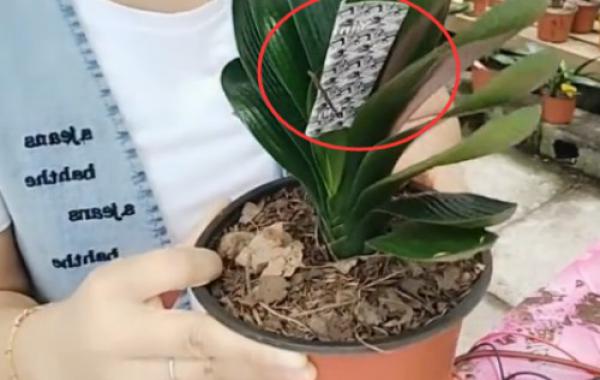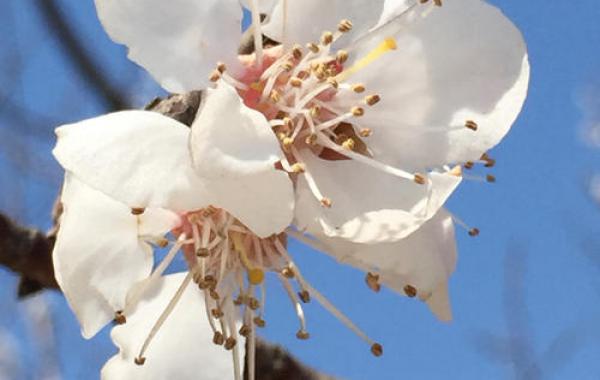Methods and techniques of hydroponic culture of Cymbidium

Many families have planted orchids. Because orchids are native to trees in southern Africa, they like the semi-shady and humid environment, so orchids can be cultivated not only in soil but also in water. Today, I will introduce them to you.
Selection of containers for hydroponic Cymbidium
In order to carry out hydroponic culture of Cymbidium, we should first choose a good container. Generally speaking, it is better to use a transparent glass container. If you raise a seedling, you only need a glass can. If you want to plant a lot of water, you can use fine wire to compile a metal mesh with a diameter of one centimeter, and make a glass hydroponic box slightly smaller than the metal mesh, or you can use a goldfish tank instead. Then the metal net was covered on the hydroponic box, and the seedlings of Cymbidium were inserted into the nutrient solution through the mesh, and the depth of the flower root in the culture medium did not exceed the limit of the false bulb of the root.
Preparation of hydroponic Magnolia nutrient solution
Nutrient solution is divided into inorganic and organic. The inorganic nutrient solution can be prepared in the following proportion: 1.5g of calcium, 0.01g of ferrous sulfate, 1g of urea, 1g of potassium dihydrogen phosphate and 0.5g of magnesium sulfate. After the above five inorganic salts are mixed together, they can be dissolved in 1000 grams of water. The organic culture solution was prepared as follows: fried flax seed flour 100g, bone powder (made of salt-free fresh bone) 100g, bean cake powder 150g, cooked sesame powder 50g, and then dissolved in 1000 grams of water. Compared with the above two kinds of nutrient solution, the composition of organic fertilizer is rich, but the nutrient content is not high, and the composition of inorganic fertilizer is relatively simple, but the fertilizer effect is high and the effect is fast. In order to learn from each other's strong points to offset their weaknesses, the two can be used together. If used alone, inorganic fertilizer is applied once a week, and organic fertilizer is applied once every 5 days.
Water for hydroponic cultivation of Magnolia
In hydroponic cultivation, tap water cannot be used directly, but "trapped" water must be used. The so-called "trapped" water means putting tap water in a container and drying it in the sun for five days to precipitate chlorides such as bleach that are harmful to the roots of the orchid. The "trapped" water, from the outside, the sediment changes from strips to lumps, and the color of the water is green. After "trapping" good water, the position of the submerged root must not submerge the false bulb. If the water level is too shallow, the magnolia can not get sufficient water supply, and if the water level is too deep (flooding the false bulb), it will cause root fester. In the process of breeding, we should pay more attention to observe the changes of water quality, and find that some roots turn yellow or black, indicating that the water is both anoxic and less fertile, and the water must be changed immediately.
Hydroponic magnolia air, sunshine, temperature
Whether we can deal with the ventilation of hydroponic orchid root is the key to the success or failure of hydroponic culture. After a period of culture, there is a layer of moss on the root. When the moss is too thick, it will seriously affect the respiration of the root and corrode the culture medium. At this time, you need to gently brush off the moss layer with a soft and clean brush (you don't have to brush it clean, because a small amount of moss at the root has little effect). In addition, always check whether there is enough oxygen in the water. The method of inspection is to put two or three small fish into the water culture box. If the small fish swim freely in the water, it means that there is no lack of oxygen in the water. If the small fish always float to the surface, their mouths and gills are exposed to the surface to breathe, which means there is no oxygen in the water.
It is found that after anoxia in the water, oxygen must be replenished. There are two methods: one is to change the water, and the other is to supply oxygen to the water with a small oxygen pump. In the treatment of sunlight, magnolia is a semi-yin-yang plant, we should pay attention to the light, especially in summer, to avoid the strong direct sunlight, so that it can receive scattered light. In addition, according to the light-oriented characteristics of Cymbidium leaves, we should pay attention to make the leaves receive light evenly, otherwise the leaf length will be different, the growth direction will be scattered back and forth, and the illumination angle should be adjusted every two or three days. In terms of temperature treatment, the ambient temperature of adult Cymbidium should be 11 ℃-25 ℃, and the seedlings can be slightly higher, 20 ℃-35 ℃. The temperature difference between day and night should be mastered in orchid cultivation in water, which should be kept at about 20 ℃ during the day and not less than 15 ℃ at night in winter.
Points for attention in hydroponic culture of magnolia:
(1) the environment is stable, that is, after the orchid is placed in the water bottle, do not move three times or four, relatively fixed environment.
(2) pay attention to nutrition and add the nutrient solution once every semimonthly.
(3) pay attention to the combination of topdressing inside and outside the root, not only adding nutrient solution to the water, but also spraying leaves with nutrient solution.
(4) stop fertilizing outside the root during flowering to prevent flowers from withering early.
(5) to promote flowering, flower nutrient solution can be injected into the head once a month. Half a milliliter at a time.
The method of hydroponic Culture of Magnolia
1. Wash the roots of 2-3-year-old Cymbidium, soak them in potassium permanganate solution for 10 minutes, then rinse them with clean water, raise them with tap water less than 1/5 of the root system, and change the water once every three days.
2. Pay attention to pruning rotten roots and old roots. New roots can germinate at the base of the false bulb for 10-15 days, add water to 1/2 to 1/3 of the root system, and grow to about 5 cm.
3. After flowering, cutting off the residual flowers and spraying potassium dihydrogen phosphate solution can enrich the plant development and promote the differentiation of flower buds.
Related
- Is the orchid suitable for indoor use? Is it good for the body?
- How to prevent the empty root of orchids?
- What to do after the crab claw orchid is withered?
- Why are the leaves of orchids always yellow? Fertilizing and watering.
- Can the root of the gentleman orchid be saved if it is rotten?
- Diagnosis and treatment of cotton-blowing beetle insects in Cymbidium
- There is a way for a gentleman's orchid to rot.
- What is the most suitable temperature and humidity for the orchid?
- How to raise a gentleman's orchid? Cultivation techniques of Cymbidium
- How to prepare the nutritive soil for the cultivation of Cymbidium



